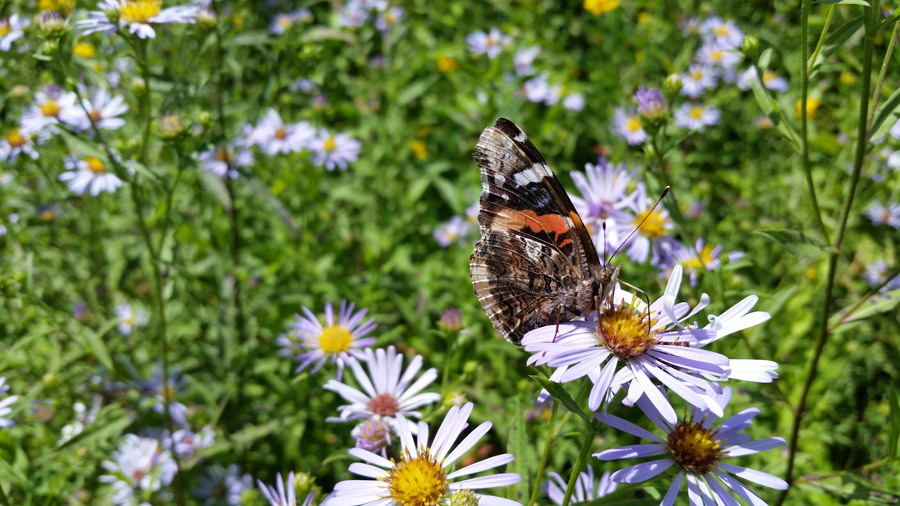
It is National Pollinator Week!
June 20-26, 2022 has been designated as National Pollinator Week in Oregon and across the country! Join the WeedWise program and other organizations across the country in celebrating our native pollinators.
Although it is clear that successfully controlling invasive weeds will improve the long-term health of pollinators, weed control efforts can adversely impact local pollinator populations if care is not taken. National Pollinator Week provides a great opportunity to stop and consider approaches to reduce the chance you may adversely impact pollinators during your weed control efforts. So enjoy these tips to protect pollinators during your invasive weed control efforts.
The Top 10 WeedWise Tips for Protecting Pollinators
- Know your land and make a plan! Your site is unique and there will be site conditions that you will want to consider. Make an inventory of your invasive weeds and survey the property for pollinators and other wildlife. Resources like iNaturalist are great tools to create plant and pollinator lists and get help with identification. Then use your site-specific conditions and surveys to help you select management practices, and timing to be effective in your weed control efforts while protecting pollinators.
- Be WeedWise and Bee Smart! Take the time to educate yourself about the invasive weeds and pollinators on your property. Understand the life cycles of the weeds and pollinators on your property. Resources like Invasive.org are a great starting point for researching invasive weeds, and the Xerces Society has a wealth of information related to pollinator health.
- Get Integrated! Consider all of your management options, and use integrated pest management (IPM) practices to ensure effective control while reducing harm and adverse impacts. Many weeds can be controlled using a variety of management techniques, so choose a strategy to minimize the impacts on pollinators. Check out the weed report excerpts from Weed Control in Natural Areas for IPM strategies for specific invasive weeds observed on your property.
- Don’t let weeds flower! Avoid controlling invasive weeds when they are in full bloom. Time your weed control efforts in early spring for most annual and biennial weeds, and in fall for most perennial weeds. Not only will this approach help prevent impacts on pollinators, but it will also help ensure that weeds won’t set viable seeds.
- Be an early bird! Carry out herbicide applications in the early morning when pollinators are less active. Mornings are also usually calm with little wind, which helps to prevent drift and damage to non-target plants during herbicide applications.
- Spot spray! Use spot spray techniques whenever possible to target invasive weeds, while minimizing the impact on other non-target nectar and pollen sources. Not only does this help preserve desirable vegetation for pollinators, but it also saves on chemical costs.
- Choose wisely! Select an effective herbicide with reduced toxicity. The Pesticide Active Ingredient Database is a great resource to review the relative toxicity of an herbicide to make sure that your weed applications don’t harm pollinators.
- Don’t evict pollinators! If you are working in heavily infested areas, there may be very few other nectar and pollen sources for pollinators. Consider a multi-step approach to controlling invasive weeds in these areas. Treat a portion of the infestation in year one and install a pollinator garden or hedgerow before treating the rest of the infestation in year two.
- Invite pollinators home! Replant areas you’ve cleared with pollinator-friendly habitat! Two great resources for planting pollinator-friendly habitats are the Maritime Northwest Pollinator Plant List, and the Meadowscaping Handbook. Looking for help on the farm? Check out Bringing Farm Edges Back to Life for tips on installing a native plant hedgerow to reduce weeds and improve pollinator habitat.
- Plant wisely! When choosing plants that will help pollinators, make sure they are not invasive. Just because a plant has a name like “Butterfly Bush” doesn’t mean it is a good fit for your yard. There are great resources like Gardensmart, and Garden Wise that can help alert you to potential invasives and to select non-invasive alternatives.
